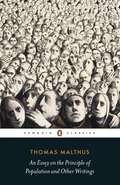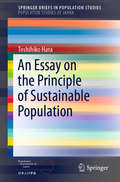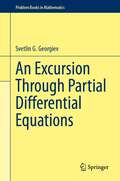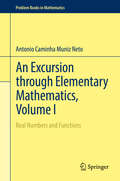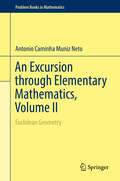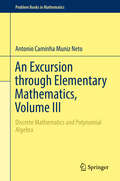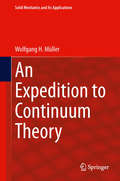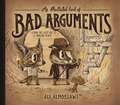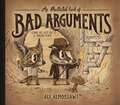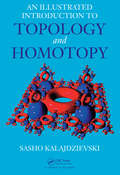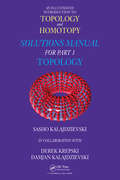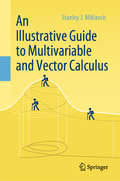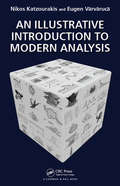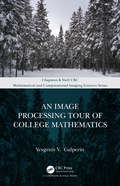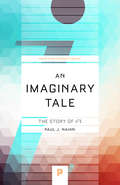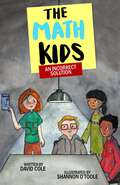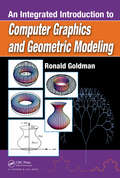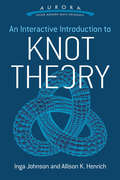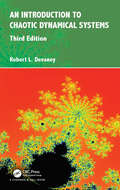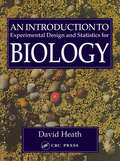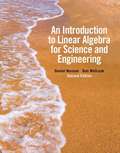- Table View
- List View
An Essay on the Principle of Population and Other Writings
by Thomas MalthusMalthus' life's work on human population and its dependency on food production and the environment was highly controversial on publication in 1798. He predicted what is known as the Malthusian catastrophe, in which humans would disregard the limits of natural resources and the world would be plagued by famine and disease. He significantly influenced the thinking of Darwin and Alfred Russel Wallace and his theories continue to raise important questions today in the fields of social theory, economics and the environment.With an introduction by Robert Mayhew.
An Essay on the Principle of Sustainable Population (SpringerBriefs in Population Studies)
by Toshihiko HaraThis book focuses on the future of the global population and proposes revising Malthus’ Law. The United Nations estimates that the global population will top 11 billion by 2100, at which point its growth will be near an end: it will find a new equilibrium in a long demographic transition from high birth and death rates to low ones. However, the author reviews the fertility developments reported in the World Population Prospects 2017, which are near or below the replacement level in most regions, with the important exception of Sub-Saharan Africa, and warns of a possible scenario of the extinction of human society. Returning to Malthus, his Essay on the Principle of Population is critically reconsidered. Simple simulations show that exponential growth and decay are unsustainable beyond the narrow ranges of the net reproduction rate. In addition, the length of reproduction periods, which depends on women’s lifespans, plays a pivotal role. The limits of growth are given in any case, to the extent that time and space will permit.From this perspective, teleological conditions such as instinct, passion, or even natural reproductive tendencies are irrelevant and unnecessary. When the population deviates too far from the replacement level, either its shrinking or massive growth will overshoot the limits of its existence. This principle of sustainable population indicates that the demographic transition must follow a logistic curve. Using a system dynamics approach, the author constructs a simulation model based on four major loops: fertility, reproduction timing, social capital accumulation, and lifespan. Using only endogenous variables, this model successfully reproduces the historical process of the demographic transition in Japan. Thereby, it shows that the timing and periods of reproduction, maximum fertility, and maximum lifespan hold the key to sustainability. Based on these findings, the author subsequently discusses recovering replacement fertility, extending lifespans, and the demographic future of the human race.
An Excursion Through Partial Differential Equations (Problem Books in Mathematics)
by Svetlin G. GeorgievPresenting a rich collection of exercises on partial differential equations, this textbook equips readers with 96 examples, 222 exercises, and 289 problems complete with detailed solutions or hints. It explores a broad spectrum of partial differential equations, fundamental to mathematically oriented scientific fields, from physics and engineering to differential geometry and variational calculus. Organized thoughtfully into seven chapters, the journey begins with fundamental problems in the realm of PDEs. Readers progress through first and second-order equations, wave and heat equations, and finally, the Laplace equation. The text adopts a highly readable and mathematically solid format, ensuring concepts are introduced with clarity and organization. Designed to cater to upper undergraduate and graduate students, this book offers a comprehensive understanding of partial differential equations. Researchers and practitioners seeking to strengthen their problem-solving skills will also find this exercise collection both challenging and beneficial.
An Excursion through Elementary Mathematics, Volume I: Real Numbers and Functions (Problem Books in Mathematics)
by Antonio Caminha Muniz NetoThis book provides a comprehensive, in-depth overview of elementary mathematics as explored in Mathematical Olympiads around the world. It expands on topics usually encountered in high school and could even be used as preparation for a first-semester undergraduate course. This first volume covers Real Numbers, Functions, Real Analysis, Systems of Equations, Limits and Derivatives, and much more. As part of a collection, the book differs from other publications in this field by not being a mere selection of questions or a set of tips and tricks that applies to specific problems. It starts from the most basic theoretical principles, without being either too general or too axiomatic. Examples and problems are discussed only if they are helpful as applications of the theory. Propositions are proved in detail and subsequently applied to Olympic problems or to other problems at the Olympic level. The book also explores some of the hardest problems presented at National and International Mathematics Olympiads, as well as many essential theorems related to the content. An extensive Appendix offering hints on or full solutions for all difficult problems rounds out the book.
An Excursion through Elementary Mathematics, Volume II: Euclidean Geometry (Problem Books in Mathematics)
by Antonio Caminha Muniz NetoThis book provides a comprehensive, in-depth overview of elementary mathematics as explored in Mathematical Olympiads around the world. It expands on topics usually encountered in high school and could even be used as preparation for a first-semester undergraduate course. This second volume covers Plane Geometry, Trigonometry, Space Geometry, Vectors in the Plane, Solids and much more.As part of a collection, the book differs from other publications in this field by not being a mere selection of questions or a set of tips and tricks that applies to specific problems. It starts from the most basic theoretical principles, without being either too general or too axiomatic. Examples and problems are discussed only if they are helpful as applications of the theory. Propositions are proved in detail and subsequently applied to Olympic problems or to other problems at the Olympic level.The book also explores some of the hardest problems presented at National and International Mathematics Olympiads, as well as many essential theorems related to the content. An extensive Appendix offering hints on or full solutions for all difficult problems rounds out the book.
An Excursion through Elementary Mathematics, Volume III: Discrete Mathematics And Polynomial Algebra (Problem Books in Mathematics)
by Antonio Caminha Muniz NetoThis book provides a comprehensive, in-depth overview of elementary mathematics as explored in Mathematical Olympiads around the world. It expands on topics usually encountered in high school and could even be used as preparation for a first-semester undergraduate course. This third and last volume covers Counting, Generating Functions, Graph Theory, Number Theory, Complex Numbers, Polynomials, and much more.As part of a collection, the book differs from other publications in this field by not being a mere selection of questions or a set of tips and tricks that applies to specific problems. It starts from the most basic theoretical principles, without being either too general or too axiomatic. Examples and problems are discussed only if they are helpful as applications of the theory. Propositions are proved in detail and subsequently applied to Olympic problems or to other problems at the Olympic level.The book also explores some of the hardest problems presented at National and International Mathematics Olympiads, as well as many essential theorems related to the content. An extensive Appendix offering hints on or full solutions for all difficult problems rounds out the book.
An Expedition to Continuum Theory (Solid Mechanics and Its Applications #210)
by Wolfgang H. MüllerThis book introduces field theory as required in solid and fluid mechanics as well as in electromagnetism. It includes the necessary applied mathematical framework of tensor algebra and tensor calculus, using an inductive approach particularly suited to beginners. It is geared toward undergraduate classes in continuum theory for engineers in general, and more specifically to courses in continuum mechanics. Students will gain a sound basic understanding of the subject as well as the ability to solve engineering problems by applying the general laws of nature in terms of the balances for mass, momentum, and energy in combination with material-specific relations in terms of constitutive equations, thus learning how to use the theory in practice for themselves. This is facilitated by numerous examples and problems provided throughout the text.
An Illustrated Book of Bad Arguments
by Ali Almossawi Alejandro GiraldoThe antidote to fuzzy thinking, with furry animals! <P><P>Have you read (or stumbled into) one too many irrational online debates? Ali Almossawi certainly had, so he wrote An Illustrated Book of Bad Arguments! This handy guide is here to bring the internet age a much-needed dose of old-school logic (really old-school, a la Aristotle). <P><P>Here are cogent explanations of the straw man fallacy, the slippery slope argument, the ad hominem attack, and other common attempts at reasoning that actually fall short—plus a beautifully drawn menagerie of animals who (adorably) commit every logical faux pas. Rabbit thinks a strange light in the sky must be a UFO because no one can prove otherwise (the appeal to ignorance). And Lion doesn’t believe that gas emissions harm the planet because, if that were true, he wouldn’t like the result (the argument from consequences). <P><P>Once you learn to recognize these abuses of reason, they start to crop up everywhere from congressional debate to YouTube comments—which makes this geek-chic book a must for anyone in the habit of holding opinions.
An Illustrated Book of Bad Arguments: Learn The Lost Art Of Making Sense (Bad Arguments #0)
by Ali Almossawi“This short book makes you smarter than 99% of the population. . . . The concepts within it will increase your company’s ‘organizational intelligence.’. . . It’s more than just a must-read, it’s a ‘have-to-read-or-you’re-fired’ book.”—Geoffrey James, INC.com From the author of An Illustrated Book of Loaded Language, here’s the antidote to fuzzy thinking, with furry animals! Have you read (or stumbled into) one too many irrational online debates? Ali Almossawi certainly had, so he wrote An Illustrated Book of Bad Arguments! This handy guide is here to bring the internet age a much-needed dose of old-school logic (really old-school, a la Aristotle). Here are cogent explanations of the straw man fallacy, the slippery slope argument, the ad hominem attack, and other common attempts at reasoning that actually fall short—plus a beautifully drawn menagerie of animals who (adorably) commit every logical faux pas. Rabbit thinks a strange light in the sky must be a UFO because no one can prove otherwise (the appeal to ignorance). And Lion doesn’t believe that gas emissions harm the planet because, if that were true, he wouldn’t like the result (the argument from consequences). Once you learn to recognize these abuses of reason, they start to crop up everywhere from congressional debate to YouTube comments—which makes this geek-chic book a must for anyone in the habit of holding opinions.
An Illustrated Introduction to Topology and Homotopy
by Sasho KalajdzievskiAn Illustrated Introduction to Topology and Homotopy explores the beauty of topology and homotopy theory in a direct and engaging manner while illustrating the power of the theory through many, often surprising, applications. This self-contained book takes a visual and rigorous approach that incorporates both extensive illustrations and full proofs
An Illustrated Introduction to Topology and Homotopy Solutions Manual for Part 1 Topology
by Sasho Kalajdzievski Derek Krepski Damjan KalajdzievskiThis solution manual accompanies the first part of the book An Illustrated Introduction toTopology and Homotopy by the same author. Except for a small number of exercises inthe first few sections, we provide solutions of the (228) odd-numbered problemsappearing in first part of the book (Topology). The primary targets of this manual are thestudents of topology. This set is not disjoint from the set of instructors of topologycourses, who may also find this manual useful as a source of examples, exam problems,etc.
An Illustrative Guide to Multivariable and Vector Calculus
by Stanley J. MiklavcicThis textbook focuses on one of the most valuable skills in multivariable and vector calculus: visualization. With over one hundred carefully drawn color images, students who have long struggled picturing, for example, level sets or vector fields will find these abstract concepts rendered with clarity and ingenuity. This illustrative approach to the material covered in standard multivariable and vector calculus textbooks will serve as a much-needed and highly useful companion. Emphasizing portability, this book is an ideal complement to other references in the area. It begins by exploring preliminary ideas such as vector algebra, sets, and coordinate systems, before moving into the core areas of multivariable differentiation and integration, and vector calculus. Sections on the chain rule for second derivatives, implicit functions, PDEs, and the method of least squares offer additional depth; ample illustrations are woven throughout. Mastery Checks engage students in material on the spot, while longer exercise sets at the end of each chapter reinforce techniques. An Illustrative Guide to Multivariable and Vector Calculus will appeal to multivariable and vector calculus students and instructors around the world who seek an accessible, visual approach to this subject. Higher-level students, called upon to apply these concepts across science and engineering, will also find this a valuable and concise resource.
An Illustrative Introduction to Modern Analysis
by Nikolaos Katzourakis Eugen VarvarucaAimed primarily at undergraduate level university students, An Illustrative Introduction to Modern Analysis provides an accessible and lucid contemporary account of the fundamental principles of Mathematical Analysis. The themes treated include Metric Spaces, General Topology, Continuity, Completeness, Compactness, Measure Theory, Integration, Lebesgue Spaces, Hilbert Spaces, Banach Spaces, Linear Operators, Weak and Weak* Topologies. Suitable both for classroom use and independent reading, this book is ideal preparation for further study in research areas where a broad mathematical toolbox is required.
An Image Processing Tour of College Mathematics (Chapman & Hall/CRC Mathematical and Computational Imaging Sciences Series)
by Yevgeniy V. GalperinAn Image Processing Tour of College Mathematics aims to provide meaningful context for reviewing key topics of the college mathematics curriculum, to help students gain confidence in using concepts and techniques of applied mathematics, to increase student awareness of recent developments in mathematical sciences, and to help students prepare for graduate studies. The topics covered include a library of elementary functions, basic concepts of descriptive statistics, probability distributions of functions of random variables, definitions and concepts behind first- and second-order derivatives, most concepts and techniques of traditional linear algebra courses, an introduction to Fourier analysis, and a variety of discrete wavelet transforms – all of that in the context of digital image processing. Features Pre-calculus material and basic concepts of descriptive statistics are reviewed in the context of image processing in the spatial domain. Key concepts of linear algebra are reviewed both in the context of fundamental operations with digital images and in the more advanced context of discrete wavelet transforms. Some of the key concepts of probability theory are reviewed in the context of image equalization and histogram matching. The convolution operation is introduced painlessly and naturally in the context of naïve filtering for denoising and is subsequently used for edge detection and image restoration. An accessible elementary introduction to Fourier analysis is provided in the context of image restoration. Discrete wavelet transforms are introduced in the context of image compression, and the readers become more aware of some of the recent developments in applied mathematics. This text helps students of mathematics ease their way into mastering the basics of scientific computer programming.
An Imaginary Tale
by Paul J. NahinToday complex numbers have such widespread practical use--from electrical engineering to aeronautics--that few people would expect the story behind their derivation to be filled with adventure and enigma. In An Imaginary Tale, Paul Nahin tells the 2000-year-old history of one of mathematics' most elusive numbers, the square root of minus one, also known as i. He recreates the baffling mathematical problems that conjured it up, and the colorful characters who tried to solve them.In 1878, when two brothers stole a mathematical papyrus from the ancient Egyptian burial site in the Valley of Kings, they led scholars to the earliest known occurrence of the square root of a negative number. The papyrus offered a specific numerical example of how to calculate the volume of a truncated square pyramid, which implied the need for i. In the first century, the mathematician-engineer Heron of Alexandria encountered I in a separate project, but fudged the arithmetic; medieval mathematicians stumbled upon the concept while grappling with the meaning of negative numbers, but dismissed their square roots as nonsense. By the time of Descartes, a theoretical use for these elusive square roots--now called "imaginary numbers"--was suspected, but efforts to solve them led to intense, bitter debates. The notorious i finally won acceptance and was put to use in complex analysis and theoretical physics in Napoleonic times.Addressing readers with both a general and scholarly interest in mathematics, Nahin weaves into this narrative entertaining historical facts and mathematical discussions, including the application of complex numbers and functions to important problems, such as Kepler's laws of planetary motion and ac electrical circuits. This book can be read as an engaging history, almost a biography, of one of the most evasive and pervasive "numbers" in all of mathematics.
An Imaginary Tale
by Paul J. NahinToday complex numbers have such widespread practical use--from electrical engineering to aeronautics--that few people would expect the story behind their derivation to be filled with adventure and enigma. In An Imaginary Tale, Paul Nahin tells the 2000-year-old history of one of mathematics' most elusive numbers, the square root of minus one, also known as i. He recreates the baffling mathematical problems that conjured it up, and the colorful characters who tried to solve them. In 1878, when two brothers stole a mathematical papyrus from the ancient Egyptian burial site in the Valley of Kings, they led scholars to the earliest known occurrence of the square root of a negative number. The papyrus offered a specific numerical example of how to calculate the volume of a truncated square pyramid, which implied the need for i. In the first century, the mathematician-engineer Heron of Alexandria encountered I in a separate project, but fudged the arithmetic; medieval mathematicians stumbled upon the concept while grappling with the meaning of negative numbers, but dismissed their square roots as nonsense. By the time of Descartes, a theoretical use for these elusive square roots--now called "imaginary numbers"--was suspected, but efforts to solve them led to intense, bitter debates. The notorious i finally won acceptance and was put to use in complex analysis and theoretical physics in Napoleonic times. Addressing readers with both a general and scholarly interest in mathematics, Nahin weaves into this narrative entertaining historical facts and mathematical discussions, including the application of complex numbers and functions to important problems, such as Kepler's laws of planetary motion and ac electrical circuits. This book can be read as an engaging history, almost a biography, of one of the most evasive and pervasive "numbers" in all of mathematics.Some images inside the book are unavailable due to digital copyright restrictions.
An Imaginary Tale: The Story of √-1
by Paul J. NahinToday complex numbers have such widespread practical use--from electrical engineering to aeronautics--that few people would expect the story behind their derivation to be filled with adventure and enigma. In An Imaginary Tale, Paul Nahin tells the 2000-year-old history of one of mathematics' most elusive numbers, the square root of minus one, also known as i. He recreates the baffling mathematical problems that conjured it up, and the colorful characters who tried to solve them. In 1878, when two brothers stole a mathematical papyrus from the ancient Egyptian burial site in the Valley of Kings, they led scholars to the earliest known occurrence of the square root of a negative number. The papyrus offered a specific numerical example of how to calculate the volume of a truncated square pyramid, which implied the need for i. In the first century, the mathematician-engineer Heron of Alexandria encountered I in a separate project, but fudged the arithmetic; medieval mathematicians stumbled upon the concept while grappling with the meaning of negative numbers, but dismissed their square roots as nonsense. By the time of Descartes, a theoretical use for these elusive square roots--now called "imaginary numbers"--was suspected, but efforts to solve them led to intense, bitter debates. The notorious i finally won acceptance and was put to use in complex analysis and theoretical physics in Napoleonic times. Addressing readers with both a general and scholarly interest in mathematics, Nahin weaves into this narrative entertaining historical facts and mathematical discussions, including the application of complex numbers and functions to important problems, such as Kepler's laws of planetary motion and ac electrical circuits. This book can be read as an engaging history, almost a biography, of one of the most evasive and pervasive "numbers" in all of mathematics.Some images inside the book are unavailable due to digital copyright restrictions.
An Incorrect Solution: The Math Kids (Book 5) (The Math Kids)
by David ColeFifth grade is off to a terrible start for the Math Kids. Jordan and Justin are in a different class from Stephanie and Catherine. Worse, they have Miller the Killer for math, and he hates math! Even more troubling, Jordan witnesses Robbie, the class bully, in an angry confrontation with his father and wonders if Constable Colson might be doing more than yelling. People problems suddenly seem a lot more challenging than homework, but maybe with the right plan—and some math—the four Math Kids can find a way to deal with their classroom woes and make sure Robbie stays safe. The Math Kids: An Incorrect Solution is the fifth book in the Math Kids series.
An Information Theoretic Approach to Econometrics
by Ron C. Mittelhammer George G. JudgeThis book is intended to provide the reader with a firm conceptual and empirical understanding of basic information-theoretic econometric models and methods. Because most data are observational, practitioners work with indirect noisy observations and ill-posed econometric models in the form of stochastic inverse problems. Consequently, traditional econometric methods in many cases are not applicable for answering many of the quantitative questions that analysts wish to ask. After initial chapters deal with parametric and semiparametric linear probability models, the focus turns to solving nonparametric stochastic inverse problems. In succeeding chapters, a family of power divergence measure-likelihood functions are introduced for a range of traditional and nontraditional econometric-model problems. Finally, within either an empirical maximum likelihood or loss context, Ron C. Mittelhammer and George G. Judge suggest a basis for choosing a member of the divergence family.
An Integrated Introduction to Computer Graphics and Geometric Modeling (Chapman & Hall/CRC Computer Graphics, Geometric Modeling, and Animation Series)
by Ronald GoldmanTaking a novel, more appealing approach than current texts, An Integrated Introduction to Computer Graphics and Geometric Modeling focuses on graphics, modeling, and mathematical methods, including ray tracing, polygon shading, radiosity, fractals, freeform curves and surfaces, vector methods, and transformation techniques. The author begins with f
An Interactive Introduction to Knot Theory
by Allison K. Henrich Inga JohnsonThis well-written and engaging volume, intended for undergraduates, introduces knot theory, an area of growing interest in contemporary mathematics. The hands-on approach features many exercises to be completed by readers. Prerequisites are only a basic familiarity with linear algebra and a willingness to explore the subject in a hands-on manner.The opening chapter offers activities that explore the world of knots and links — including games with knots — and invites the reader to generate their own questions in knot theory. Subsequent chapters guide the reader to discover the formal definition of a knot, families of knots and links, and various knot notations. Additional topics include combinatorial knot invariants, knot polynomials, unknotting operations, and virtual knots.
An Introduction To Braille Mathematics: Based On The Nemeth Braille Code For Mathematics And Science Notation, 1972
by Library Of Congress Helen Roberts Bernard Marvin Krebs Barbara Taffet Abraham Nemeth National Library Service for the Blind and Physically Handicapped Staff<P><P><i>Advisory: Bookshare has learned that this book offers only partial accessibility. We have kept it in the collection because it is useful for some of our members. Benetech is actively working on projects to improve accessibility issues such as thesse.</i>
An Introduction To Chaotic Dynamical Systems
by Robert L. DevaneyThere is an explosion of interest in dynamical systems in the mathematical community as well as in many areas of science. The results have been truly exciting: systems which once seemed completely intractable from an analytic point of view can now be understood in a geometric or qualitative sense rather easily. Scientists and engineers realize the power and the beauty of the geometric and qualitative techniques. These techniques apply to a number of important nonlinear problems ranging from physics and chemistry to ecology and economics. Computer graphics have allowed us to view the dynamical behavior geometrically. The appearance of incredibly beautiful and intricate objects such as the Mandelbrot set, the Julia set, and other fractals have really piqued interest in the field. This is text is aimed primarily at advanced undergraduate and beginning graduate students. Throughout, the author emphasizes the mathematical aspects of the theory of discrete dynamical systems, not the many and diverse applications of this theory. The field of dynamical systems and especially the study of chaotic systems has been hailed as one of the important breakthroughs in science in the past century and its importance continues to expand. There is no question that the field is becoming more and more important in a variety of scientific disciplines. New to this edition: •Greatly expanded coverage complex dynamics now in Chapter 2•The third chapter is now devoted to higher dimensional dynamical systems.•Chapters 2 and 3 are independent of one another.•New exercises have been added throughout.
An Introduction To Experimental Design And Statistics For Biology
by David HeathThis illustrated textbook for biologists provides a refreshingly clear and authoritative introduction to the key ideas of sampling, experimental design, and statistical analysis. The author presents statistical concepts through common sense, non-mathematical explanations and diagrams. These are followed by the relevant formulae and illustrated by w
An Introduction To Linear Algebra For Science And Engineering (Second Edition)
by Daniel Norman Dan WolczukNorman/Wolczuk's An Introduction to Linear Algebra for Science and Engineering has been widely respected for its unique approach, which helps students understand and apply theory and concepts by combining theory with computations and slowly bringing students to the difficult abstract concepts. This approach includes an early treatment of vector spaces and complex topics in a simpler, geometric context. An Introduction to Linear Algebra for Science and Engineering promotes advanced thinking and understanding by encouraging students to make connections between previously learned and new concepts and demonstrates the importance of each topic through applications. NEW! MyMathLab is now available for this text. The course features assignable homework exercises plus the complete eBook, in addition to tutorial and assessment tools that make it easy to manage your course online.
